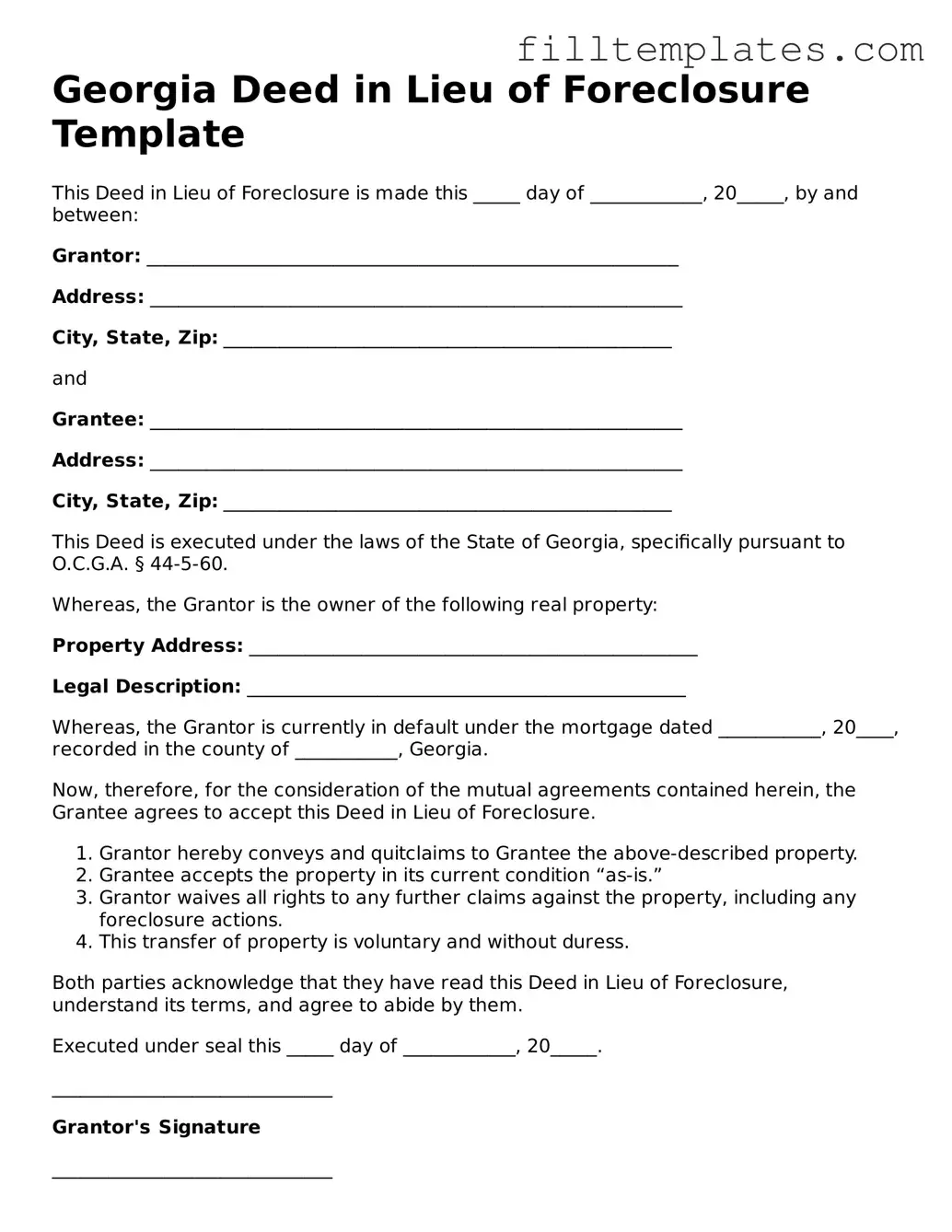Georgia Deed in Lieu of Foreclosure Template
This Deed in Lieu of Foreclosure is made this _____ day of ____________, 20_____, by and between:
Grantor: _________________________________________________________
Address: _________________________________________________________
City, State, Zip: ________________________________________________
and
Grantee: _________________________________________________________
Address: _________________________________________________________
City, State, Zip: ________________________________________________
This Deed is executed under the laws of the State of Georgia, specifically pursuant to O.C.G.A. § 44-5-60.
Whereas, the Grantor is the owner of the following real property:
Property Address: ________________________________________________
Legal Description: _______________________________________________
Whereas, the Grantor is currently in default under the mortgage dated ___________, 20____, recorded in the county of ___________, Georgia.
Now, therefore, for the consideration of the mutual agreements contained herein, the Grantee agrees to accept this Deed in Lieu of Foreclosure.
- Grantor hereby conveys and quitclaims to Grantee the above-described property.
- Grantee accepts the property in its current condition “as-is.”
- Grantor waives all rights to any further claims against the property, including any foreclosure actions.
- This transfer of property is voluntary and without duress.
Both parties acknowledge that they have read this Deed in Lieu of Foreclosure, understand its terms, and agree to abide by them.
Executed under seal this _____ day of ____________, 20_____.
______________________________
Grantor's Signature
______________________________
Grantee's Signature
______________________________
Witness Signature
______________________________
Notary Public Signature
My Commission Expires: _______________
